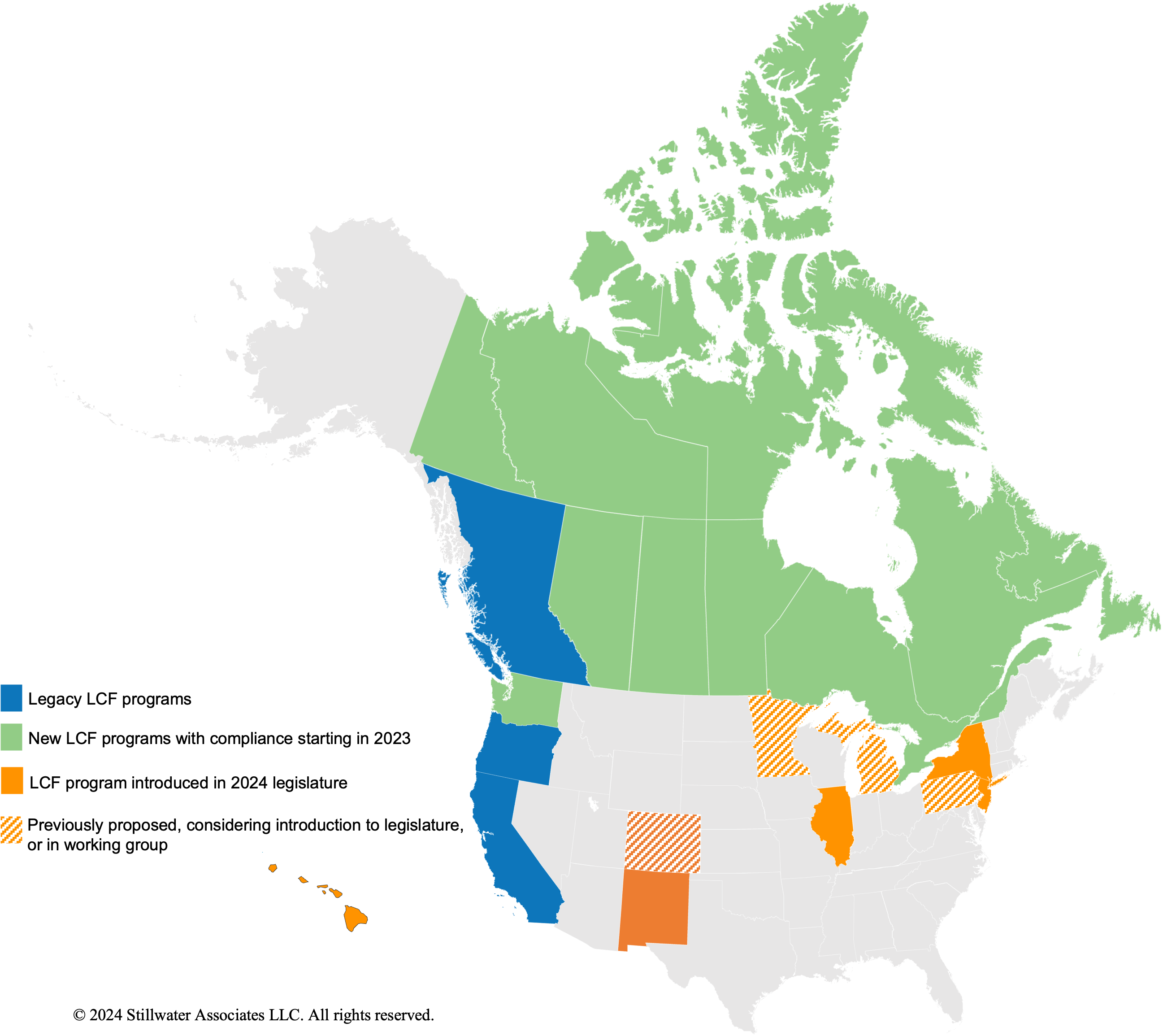New Mexico Set to Join the Low Carbon Fuels Club
Link to article: https://stillwaterassociates.com/new-mexico-set-to-join-the-low-carbon-fuels-club/
February 14, 2024
 On the evening of February 13th, 2024 the New Mexico State Senate followed the lead of the State House and passed House Bill 41 (HB41) to establish the Clean Transportation Fuels Standard (CTFS). It now goes to the desk of Governor Michelle Luhan Grisham who is expected to sign it in the coming days. With the governor’s signature, New Mexico will become the fourth U.S. state to adopt a Low Carbon Fuel (LCF) program. This is particularly noteworthy as New Mexico is also the second largest oil producing state in the U.S. (trailing only Texas).
On the evening of February 13th, 2024 the New Mexico State Senate followed the lead of the State House and passed House Bill 41 (HB41) to establish the Clean Transportation Fuels Standard (CTFS). It now goes to the desk of Governor Michelle Luhan Grisham who is expected to sign it in the coming days. With the governor’s signature, New Mexico will become the fourth U.S. state to adopt a Low Carbon Fuel (LCF) program. This is particularly noteworthy as New Mexico is also the second largest oil producing state in the U.S. (trailing only Texas).
Stillwater Associates has been reporting on the potential for a New Mexico LCF program since the 2021 session of the legislature considered SB11. We updated that analysis taking into consideration HB426 during the 2023 session. Our analysis of HB426 was recently edited to update and elaborate on our calculations of the expected price impacts.
Summarizing the key provisions of HB41 which now awaits the governor’s endorsement:
- The regulations are to be managed by the New Mexico Environmental Improvement Board (“Board”)
- Regulations implementing the CTFS to be promulgated by July 1, 2026
- The Board is directed to establish an advisory committee of diverse stakeholders to offer input and review the proposed regulations.
- The standard is to have annually decreasing carbon intensity (CI) targets designed to achieve a 20% CI reduction by 2030 and a 30% CI reduction by 2040. These are to be measured versus a 2018 baseline.
- Program to include credit-generating opportunities for activities and products which support reductions in GHG emissions from transportation.
- Utilities are directed to invest revenues from credit sales in infrastructure to support transportation decarbonization, including electrification.
- Program is to allow for coordination with other jurisdictions with similar programs.
- Program may establish fees to cover administration and enforcement costs.
- Board to establish a periodic review process with input from the advisory committee to consider potential adjustments to the program.
The key differences between HB41 and last year’s HB426 include the addition of potential project credits (item 5 above) and deletion of language concerning disproportionately impacted communities. These differences are not expected to materially impact the cost estimates which we reported based on HB426.
Looking for additional input on how the New Mexico CTFS or similar programs in other states may affect your business or provide investment opportunities? Reach out to us!
Tags: Clean Fuels, Clean Transportation Fuels Standard, CTFS, HB41, HB426, LCFS, Low Carbon Fuel Standard, New Mexico, SB11